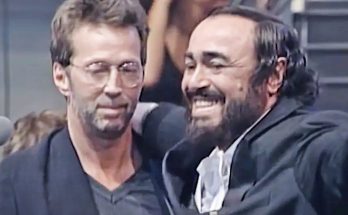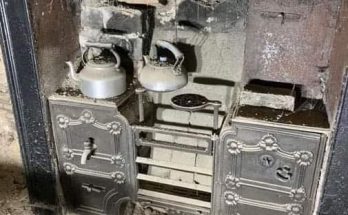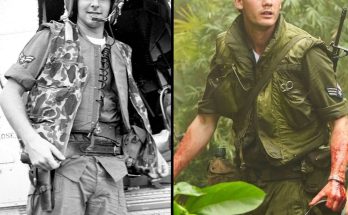The Term Moonshining Originally Referred To Any Job That Was Performed At Night – But It Didn’t Stay That Way For Long
The word “moonshining” originated in England and, at first, it referred to any job or activity that was performed at night. During the period of time between 1920 and 1933 when the United States banned alcohol production and consumption – AKA Prohibition – people didn’t stop making the products even though it was now illegal, they just adapted their methods of production and distribution accordingly. Brew masters secretly operated illegal whiskey stills at night with the goal of avoiding the attention of the authorities. These men became known as moonshiners: their wares were moonshine and those who distributed their illicit products became known as bootleggers. In the dark of the night, all they could do was hope that no one would notice the smoke billowing up from the stills.
Southerners Relied On Their Moonshine For Income
As early as the 1700s, officials started taxing liquor. So, in order to earn some extra money on the side, southern farmers and immigrants began mass producing their own moonshine in secret – tax free. Moonshine became a huge income generator for people in Appalachia during the early 20th century, particularly in areas entrenched in poverty. And when the Prohibition laws were enacted, moonshiners simply increased their production quotas and fed the demand for illegal hooch.
Bootleggers And Rumrunners Were Essential To Getting The Product Out To Anxious Consumers
The people who produced the illegal alcohol were called moonshiners, but those who actually smuggled and transported the hooch around town were known as bootleggers. The name dates back to colonial times when alcohol smugglers would conceal their drinks inside their large riding boots. Eventually, bootleggers upgraded their methods and began using cars to move their product instead. Rumrummers were essentially the same as bootleggers, except they moved their products by sea, usually hiding it below deck in the ship’s cargo area.
To Avoid The Law, Bootleggers Souped-Up Their Cars
In the 1930s, ’40s, and ’50s, bootleggers drove what appeared to be average cars – except they were filled to the brim with moonshine and had much more powerful engines than any passers-by would expect. These vehicles were anything but stock. Their engines were boosted so the bootleggers could outrun police and tax authorities. Often, the bootleggers eliminated the back seats entirely in order to fit more alcohol into their vehicles. And to prevent the jars of moonshine from shattering during high-seed transport on switchback turns and bumpy back roads, the cars were fitted with super-stiff suspensions. As a result, bootleggers were able to drive around with upward of 100 gallons of moonshine inside their cars at any given time without raising any suspicions.
The Famous Ford Model T Was A Favorite Among Serious Bootleggers
One of the most famous moonshiners, Raymond Parks, operated his bootlegging operation with the help of the Ford Model T. At the time, a majority of the cars on the road were Model Ts, so it wasn’t hard to travel around unnoticed. Ironically, Henry Ford was an avid Prohibitionist.
The Ford V-8 1939 and ’40 coupe were also particularly popular among bootleggers. Mechanics would bore out the cylinders, install specially designed cam shafts, and completely rebuild the carburetors to allow them to generate more power – essentially turning them into hot rods. Mechanics would also swap in engines from Cadillac ambulances to make them even faster.
NASCAR legend Junior Johnson (who was himself once a bootlegger) favored the 1961 Chrysler New Yorker with its V-8 engine and large amount of cargo space. He even installed a switch that could turn off his tail lights and brake lights in order to more easily escape from authorities.
The Faster The Car, The Better The Bragging Rights
Moonshiners gained so much practice running away from cops that they soon started racing one another to see who in fact was the fastest driver. In 1947, Big Bill France organized a meeting with other car drivers, owners, and mechanics in Daytona, FL, to set up the official racing rules. The result of this meeting was the creation of the National Association for Stock Car Auto Racing (NASCAR). The first official NASCAR race then took place on February 15, 1948, on the beach in Daytona. The majority of the drivers had a history of moonshining, and Red Byron, a notorious bootlegger, won the very first race.
Bootleggers Had A Big Advantage Over Other, Less-Experienced Drivers
he most famous bootlegger-turned-NASCAR driver was Junior Johnson, and he was convinced that his experience transporting moonshine gave him an edge on the race track. He even told NASCAR.com:
“It gave me so much advantage over other people that had to train and learn how to drive. When I sat down in that seat the first race I ever ran, it was a backseat to what I’d already been through. I had did all them spinning deals sideways and stuff like that. It just made my job so much easier than anybody I had seen come along and go into it. Never, ever, did I see a guy who could take a car any deeper than I could and save it, as long as I raced.”








